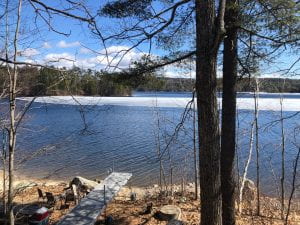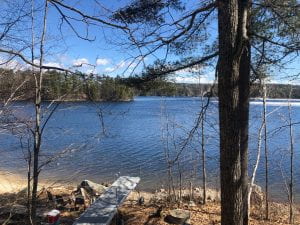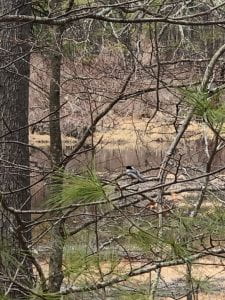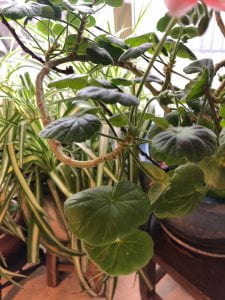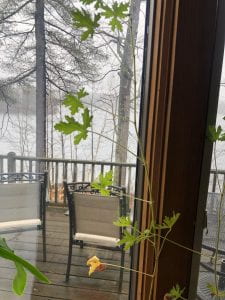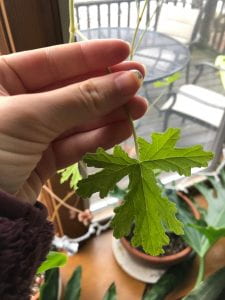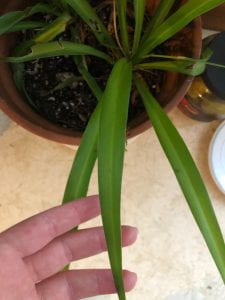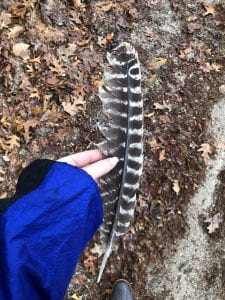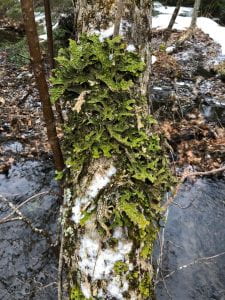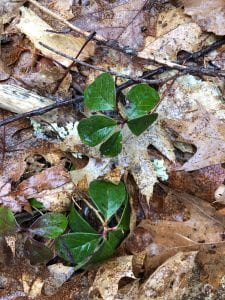Date: March 29th, 2020
Location: 43.9290, -70.5674, elevation 267′
Description of the site: Mostly flat terrain, a few streams with bridges over them. It is a mixed conifer forest with dominant white pine.
Signs of Spring:
This is not from the walk, but from my porch. However, I though it was such an amazing and important sign of spring that I wanted to include it. These two pictures were taken about 10 minutes apart. It was a 50º day and I got to watch the last ice chunks covering Little Sebago Lake break off and melt away. This is an important sign of spring because the melting of ice means lake turnover: the stratified layers of the lake all merge together and turnover, allowing the nutrient rich waters from the bottom of the lake cycle up to the top. This process is good for fish because it distributes oxygenated water and nutrients.
Another sign of spring are these daffodil shoots coming up. They are one of the first flowers to come up in early spring, but they foreshadow the onset of all the other vegetation sprouting.
My last sign of spring is a chickadee I saw singing and hopping along branches. There were other birds of similar size flying around with the chickadees but I only got a really good look at the one chickadee. This is a sign of spring because it is the beginning of nesting season, so birds may be calling for mates.
Leaf Morphology: I looked for any leaves that were alive/not needles, on my walk, but found nothing. Instead, I will be describing the leaf morphology of some of my houseplants.
This leaf is adaxial and the leaves of the plant are whorled. They are simple leaves. The tertiary veins are precurrent and the veins are palmate venation. The leaves are ovate. The leaf base shape is lobate and the leaf apex shape is rounded. The leaf margin is crenate and the leaf is pubescent.
The leaf is adaxial and the leaves are alternate. The lease are simple leaves and the tertiary veins are reticulate. The leaf venation is palmate. The leaf shape is ovate, the base shape sagittate, and the apex shape is retuse. The leaf margin is lobed and erose. This leaf is also pubescent.
This leaf is adaxial. This plant lacks a stem or petioles and grows more like a grass. They are simple leaves and the veins have parallel venation. The leaf shape is oblong. The leaf apex shape is attenuate and the leaf base shape is cuneate. The leaf margin is unlobed. The leaves are glabrous.
Narrative: The weather in the lake picture was 50º and sunny. The weather on the woods walk in the state park was 44º and partly sunny. The trail I too was called Outer Loop. For most of the trail, we could see crooked river, which feeds into Sebago Lake. We saw some fishing boats floating down the river and some deer tracks down by the riverbank. At the end of the trail, we ended up at Sebago Lake before we turned back. There was still some patches of snow, but most of it was melter. There were many white pine saplings lining the trails.


